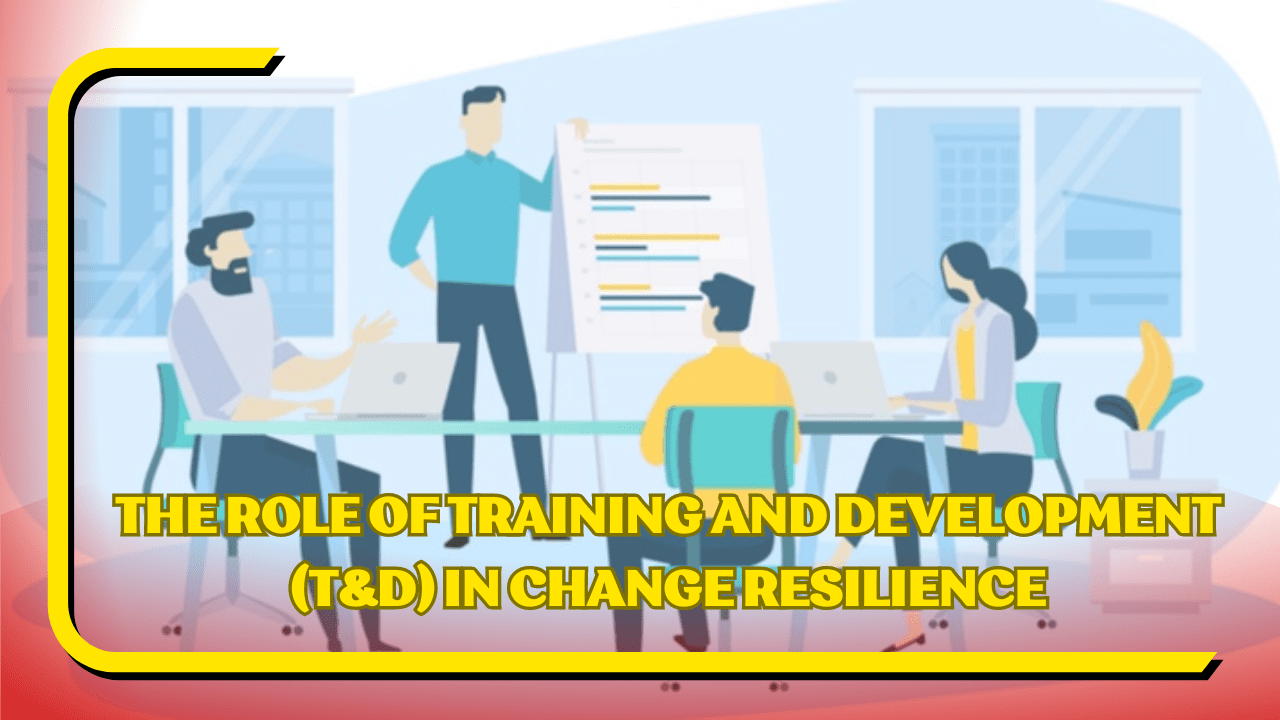The Role of Training and Development (T&D) in Change Resilience

The Role of Training and Development (T&D) in Change Resilience.
In today’s rapidly evolving landscape, organizations face constant change, driven by technological advancements, emerging market trends, and evolving customer demands. The ability to adapt and thrive amidst these changes is crucial for organizational success, and that’s where training and development (T&D) plays a pivotal role in building change resilience.
Change resilience refers to an organization’s capacity to effectively respond to, navigate, and emerge stronger from disruptive events or ongoing shifts. T&D programs act as a catalyst for building this resilience by equipping employees with the knowledge, skills, and attitudes necessary to embrace change with confidence
Here’s how T&D fosters change resilience
- Skill Development
- Upskilling and reskilling programs equip employees with the necessary skills to function effectively in new environments or with evolving technologies.
- This empowers them to adapt to changes in their roles and responsibilities, ensuring a smooth transition during the change process.
- Fostering a Growth Mindset
- T&D programs can cultivate a growth mindset within the workforce, encouraging individuals to view challenges as opportunities for learning and development.
- This fosters a positive attitude toward change and motivates employees to embrace new ways of working.
- Building Collaboration and Communication
- Effective T&D programs often involve teamwork, collaboration exercises, and communication skills training.
- This equips employees to work together seamlessly during periods of change, fostering a sense of shared responsibility and collective problem-solving.
- Enhancing Problem-Solving Skills
- T&D programs can equip employees with critical thinking and problem-solving skills. This empowers them to identify challenges associated with change, analyze situations, and develop creative solutions to overcome them.
- Building Confidence and Trust
- Investing in employee development demonstrates an organization’s commitment to their well-being and future success.
- This fosters a sense of trust and confidence within the workforce, making them more receptive to change and willing to actively participate in the process.
- Promoting Positive Change Management
- T&D programs can be designed to specifically address the needs and anxieties associated with an upcoming change.
- By providing employees with clear information, managing expectations, and addressing concerns, T&D helps create a smoother and more positive change experience.
Implementing effective T&D programs for change resilience requires a strategic approach
- Identifying future skill needs
- Analyze industry trends and potential changes within the organization to identify future skill requirements.
- Tailoring programs
- Develop T&D programs that address specific needs and challenges associated with upcoming changes.
- Continuous learning
- Foster a culture of continuous learning within the organization, encouraging employees to take ownership of their development.
- Enhancing Problem-Solving Skills
- T&D programs can equip employees with critical thinking and problem-solving skills. This empowers them to identify challenges associated with change, analyze situations, and develop creative solutions to overcome them.
- Evaluation and feedback
- Regularly monitor the effectiveness of T&D programs and gather feedback from employees to ensure they are meeting their intended goals.
Conclusion
Furthermore, training and development efforts help build strong leadership capabilities within organizations, which are essential for driving change effectively. Leaders who possess strong communication, decision-making, and change management skills can inspire and motivate their teams during times of uncertainty. By providing leadership development programs and coaching sessions, organizations can empower leaders to lead with confidence, empathy, and resilience, thereby creating a supportive environment for navigating through change.
In conclusion, the role of training and development in building change resilience cannot be overstated. By investing in employee development, fostering a culture of continuous learning, enhancing employee engagement, and developing strong leadership capabilities, organizations can build the resilience needed to thrive in an ever-changing world. As change becomes inevitable, organizations that prioritize training and development will be better equipped to adapt, innovate, and succeed in the long run.
